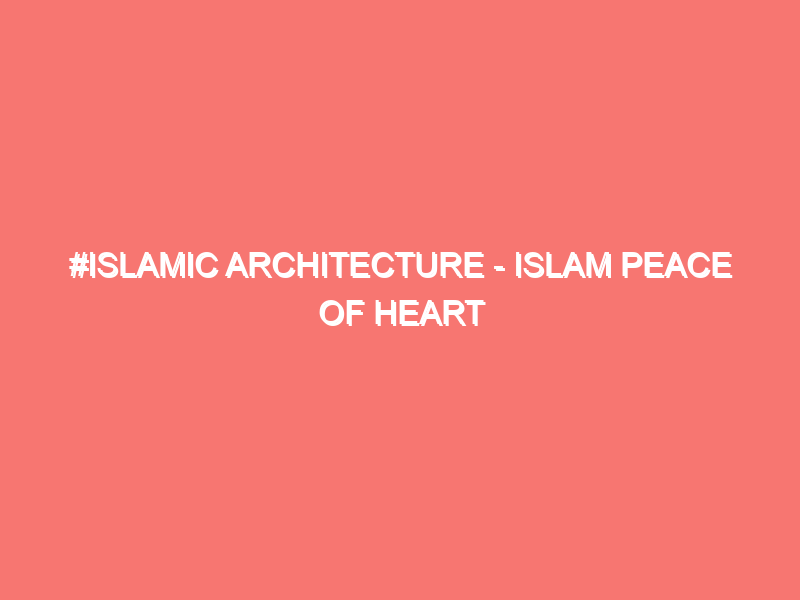Islamic architecture is a unique and diverse architectural style that has developed over the centuries in the Islamic world. It is characterized by a combination of geometric patterns, calligraphy, and intricate decoration.
Islamic architecture has its roots in the 7th century, with the rise of Islam and the building of the first mosque in Medina. Over time, Islamic architecture has developed and evolved, taking on different forms in different regions. Byzantine, Persian, and Syrian styles heavily influenced early Islamic architecture. Later, Islamic architects began to incorporate elements of their own culture and traditions, leading to the development of distinct types in different regions such as the Islamic architecture of North Africa, the Middle East, Central Asia, and Spain.
One of the most distinctive features of Islamic architecture is the use of geometric patterns, which can be found in the decoration of buildings, tilework, and calligraphy. These patterns are often created using repeating geometric shapes such as circles, stars, and hexagons. Additionally, Islamic architecture is known for its use of arches, domes, and vaults, which are used to create grand, spacious interiors.
Another essential aspect of Islamic architecture is the use of calligraphy. This art form is often used to decorate the walls, ceilings, and surfaces of buildings. The calligraphy used in Islamic architecture is typically written in Arabic and may include quotations from the Quran, religious sayings, or the names of Allah or the Prophet Muhammad.
Some of the most famous examples of Islamic architecture can be found in the Middle East, including the Alhambra in Spain, the Great Mosque of Cordoba, the Dome of the Rock in Jerusalem, the Hagia Sophia in Istanbul, the Umayyad Mosque in Damascus and the Al-Aqsa Mosque in Jerusalem.
In addition to these, in the Islamic World, The Great Mosque of Kairouan in Tunisia, The Qutub Minar in India, The Sheikh Lotfollah Mosque in Iran, and The Great Mosque of Xi’an in China, are among the most famous examples of Islamic architecture.
Islamic architecture is a unique and diverse architectural style that has developed over the centuries in the Islamic world. It is characterized by a combination of geometric patterns, calligraphy, and intricate decoration. This style of architecture has evolved over time, taking on different forms in different regions, and continues to inspire architects and designers today. The famous Islamic architectures mentioned above are the witness of the creativity and skill of the Islamic architects and builders who left us with impressive and beautiful buildings.

